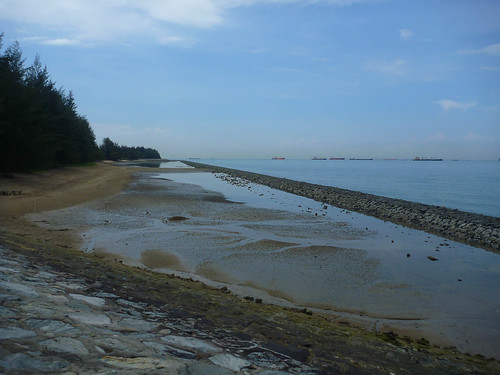
For those of us who visit and explore the shores of Singapore to document the marine life that can be found on our coasts, Tanah Merah stands out as a unique and special place. Although the original shore here is long gone due to land reclamation, a rich community of marine organisms has managed to colonise and reestablish itself. We find habitats as diverse as rocky shores, seagrass beds, sandy beaches, coastal forests, and even a coral reef on the outer edge of the seawall.
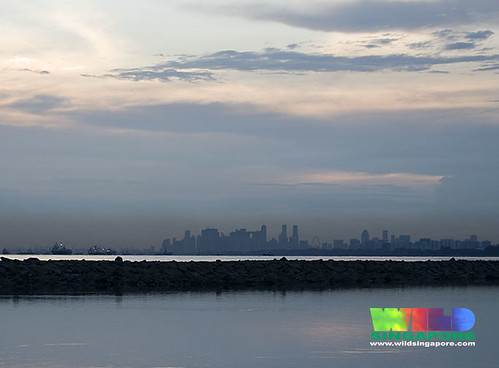
(Photo by Ria)
Unfortunately, this shore, despite its beauty and diversity, suffers from pollution. Much of the marine life is slowly recovering from the devastation of the oil spill that struck 2 years ago, although some crude oil still lingers in the environment. Another insidious threat comes from the vast quantities of garbage that wash up and get trapped behind the seawall. Because this area is not under the purview of the armies of cleaners that work tirelessly every morning to remove litter and other trash from our public beaches, the rubbish simply accumulates, forming massive piles of plastic, broken glass, and other debris.

Litter on Tanah Merah shore, July 2011;
(Photo by Ria)

Dig deep enough, and you'll find out where much of the oil has gone, April 2012;
(Photo by Ria)
In response, the International Coastal Cleanup Singapore (ICCS) team has decided to conduct a series of year-round cleanups on this shore.

And so, keen to do my part on a shore that I am personally very fond of, I signed up for the latest session, which was held on the morning of 28th April.
![05earth-day-cleanup-tanah-merah-28apr2012[benjamin-tan]](http://farm9.staticflickr.com/8020/6980954628_f042ff20b8.jpg)
(Photo by habitatnews)
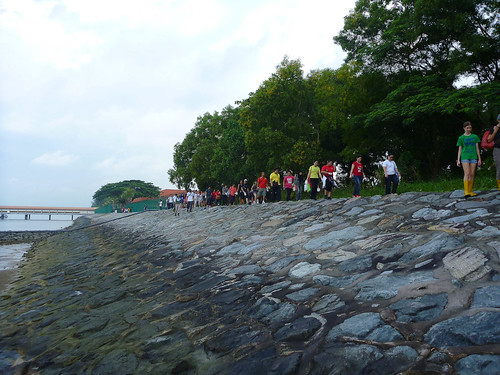
A large crowd had gathered, comprising groups from various organisations.
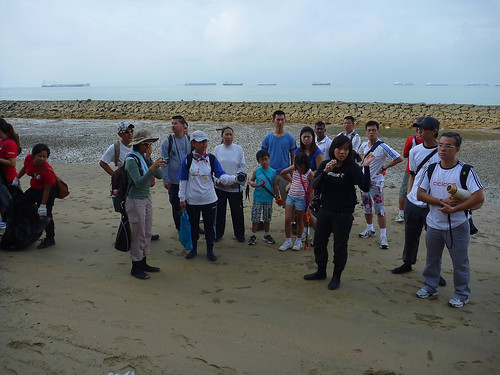
The session was led by Zone Captain Benjamin Tan and Deputy Zone Captain Gladys Chua, with assistance from Xu Weiting and Jocelyne Sze.
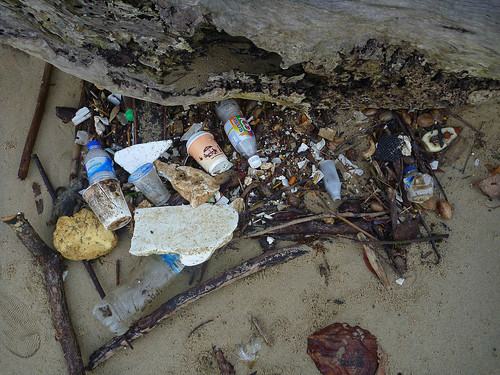
This is just a small fraction of the rubbish on the shore.
After a quick briefing, we soon scattered, with some groups walking further down the beach, while others started picking up whatever litter we could find.

![16earth-day-cleanup-tanah-merah-28apr2012[benjamin-tan]](http://farm8.staticflickr.com/7188/6980984274_edab088679.jpg)
![13earth-day-cleanup-tanah-merah-28apr2012[benjamin-tan]](http://farm9.staticflickr.com/8160/6980958152_f437c63433.jpg)
![21earth-day-cleanup-tanah-merah-28apr2012[benjamin-tan]](http://farm8.staticflickr.com/7115/7127072803_90c609d699.jpg)
![18earth-day-cleanup-tanah-merah-28apr2012[joceylne-sze]](http://farm8.staticflickr.com/7122/7127141341_7ff98a5c62.jpg)
(Photos by habitatnews)
Alas, barely half an hour had passed when the dark clouds looming above us and the rumbles of thunder made it very clear that we could not stay for long. It was with much reluctance that the call was made to clear the beach. As we began to head back towards our gathering point, the downpour began.
![21earth-day-cleanup-tanah-merah-28apr2012[joceylne-sze]](http://farm9.staticflickr.com/8020/7127143475_207ae79950.jpg)
![29earth-day-cleanup-tanah-merah-28apr2012[joceylne-sze]](http://farm8.staticflickr.com/7127/6981060894_8ac73595a1.jpg)
(Photos by habitatnews)
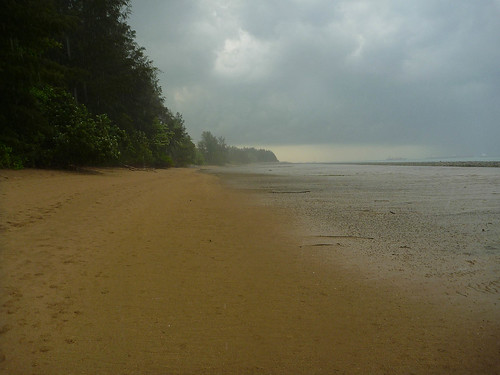
It really was disappointing, considering the sunny weather that we've been having the past few days, and all the effort put in by the organisers and the groups that had signed up in planning and coordinating the session.

Even so, in just a short period of time, we had managed to collect a massive amount of rubbish. I helped in the consolidation and weighing of the trash, and it turned out that we had accumulated more than 200 kilograms!
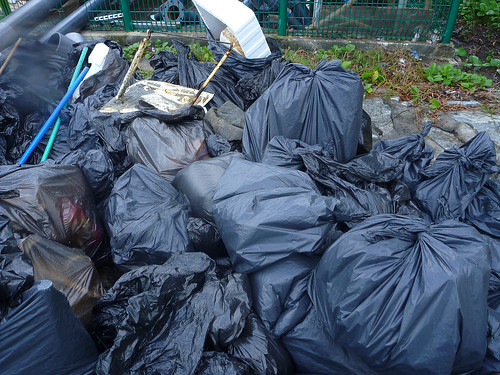
![33earth-day-cleanup-tanah-merah-28apr2012[joceylne-sze]](http://farm8.staticflickr.com/7229/6981063366_f8beac0f37.jpg)
(Photo by habitatnews)
The rain soon stopped, and although most of the participants had left, one group was so enthusiastic that they wanted to return to the shore to finish as much as they could.

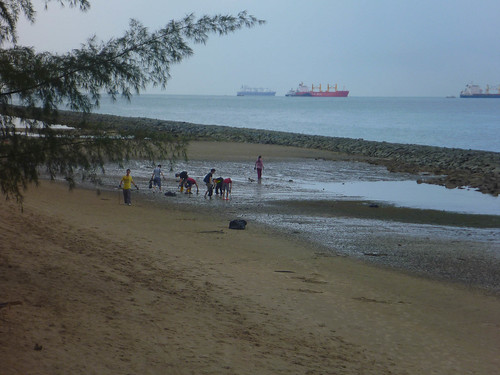
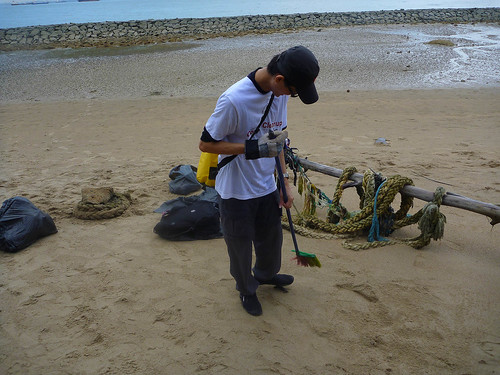
Of course, we have our fun and silly moments. Some of us do take the idea of a coastal cleanup very seriously indeed.
![11earth-day-cleanup-tanah-merah-28apr2012[xu-weiting]](http://farm9.staticflickr.com/8002/7127120517_3a22003ae4.jpg)
![60earth-day-cleanup-tanah-merah-28apr2012[benjamin-tan]](http://farm8.staticflickr.com/7045/6981001326_dc26785464.jpg)
(Photo by habitatnews)
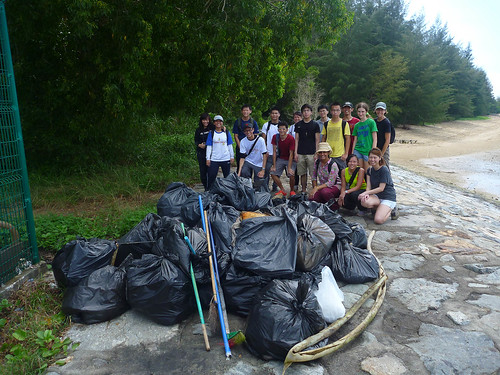
When we finally reluctantly departed the beach for the second time, due to the incoming tide, the combined total weight of the rubbish collected was around half a tonne! And we hadn't even covered the entire shore.
Of course, the work is never complete; there's more trash that we weren't able to remove, and the daily ebb and flow of the tide deposits yet more garbage. But I like to think that if we continue our efforts, we can make a difference. Today was the second cleanup session conducted this year, and I can safely say that there is a discernible reduction in the amount of visible garbage on the high shore.
What I like about Tanah Merah is that unlike many other beach cleanups in Singapore, you quickly realise the purpose and importance of your task, for the shores are truly alive.
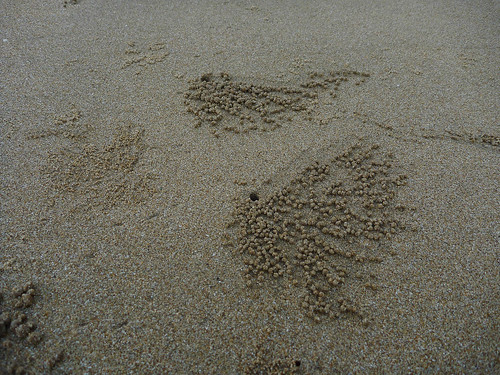
The moment you hit the beach, it's impossible not to notice these little balls of sand, arranged around small burrows.

A sand bubbler crab (Scopimera sp.) stirs inside one of the burrows.
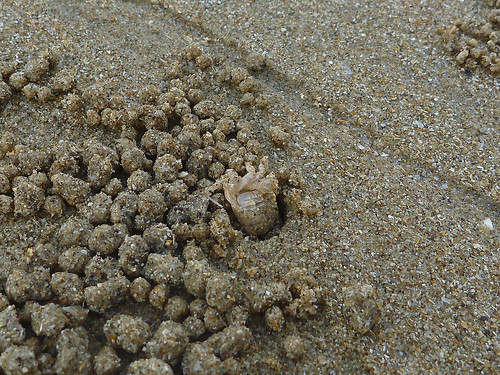
Is it safe to come out?
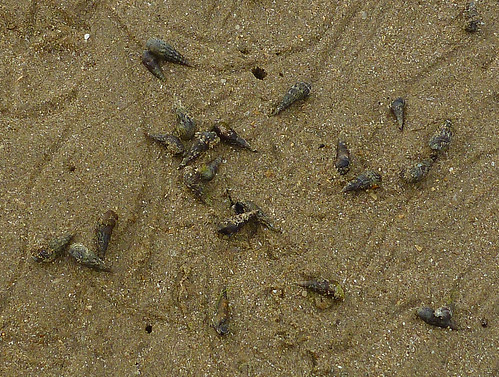
While the sand bubbler crabs occupy the higher parts of the beach, the lower, wetter areas are the domain of the zoned horn snail (Batillaria zonalis), endearingly known as the bazillion snail, due to it being present in massive numbers.
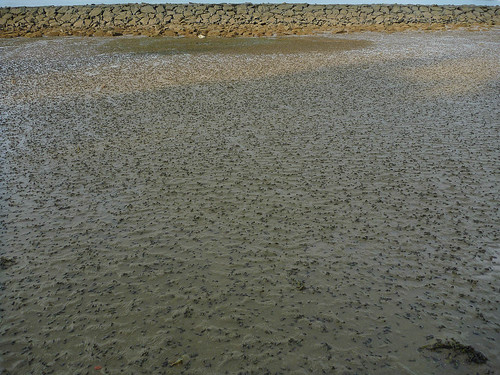

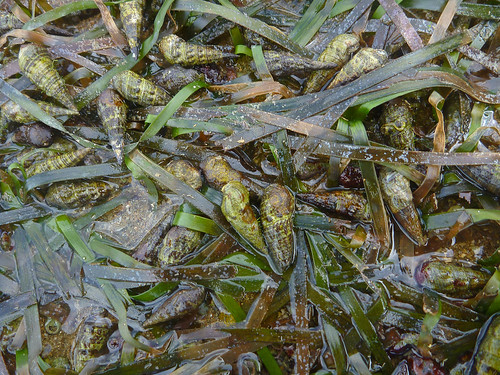
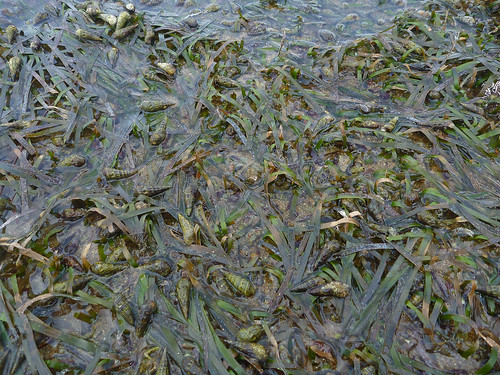

Whether on sand, silt, or nestled among the smooth ribbon seagrass (Cymodocea rotundata), the bazillion snails are truly everywhere.
![17earth-day-cleanup-tanah-merah-28apr2012[joceylne-sze]](http://farm8.staticflickr.com/7186/6981054378_b6cf73d1b6.jpg)
(Photo by habitatnews)

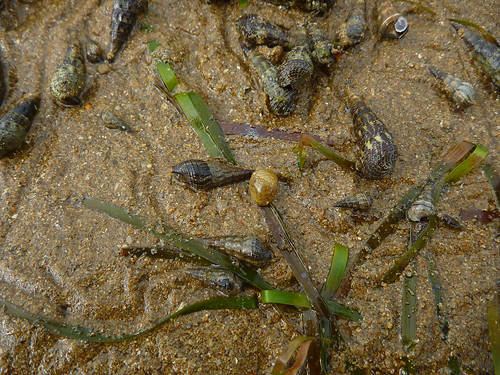
Another snail that is present in large numbers is the tiny dubious nerites (Clithon oualaniensis), a species considered locally Vulnerable due to coastal development.
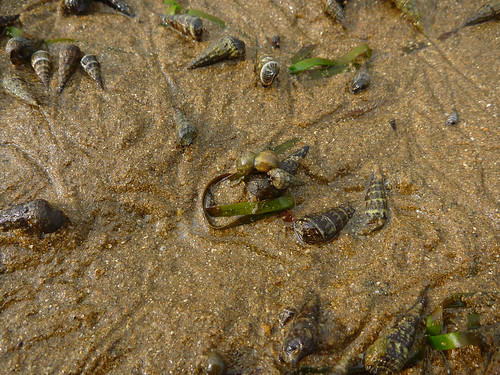
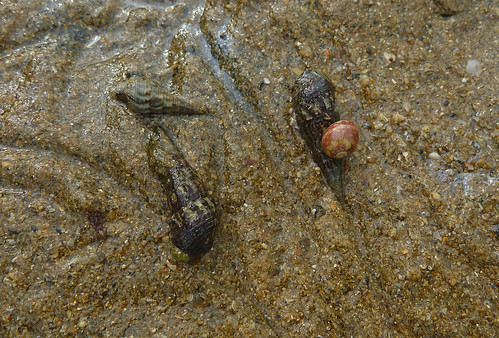
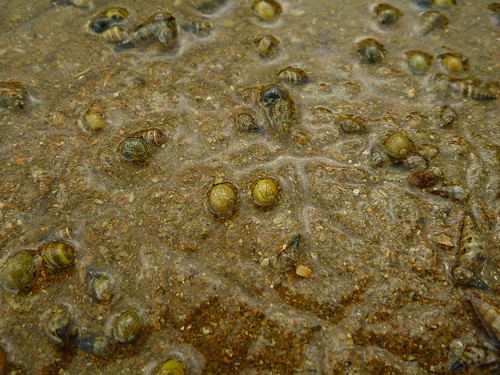
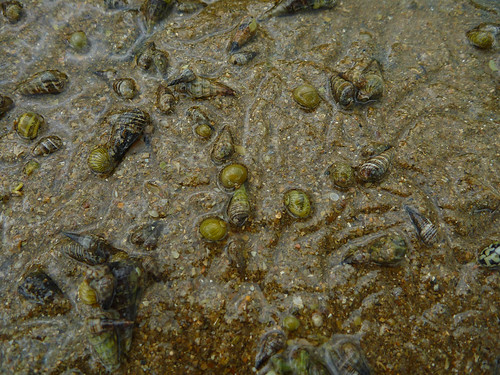
Each dubious nerite has a unique colour and pattern on its shell. I don't think anyone has attempted to catalogue all the different 'designs' out there.

While the bazillion snail feeds on detritus, and the dubious nerite grazes on algae, the mud whelk (Nassarius jacksonianus) is a scavenger that seeks out carcasses.
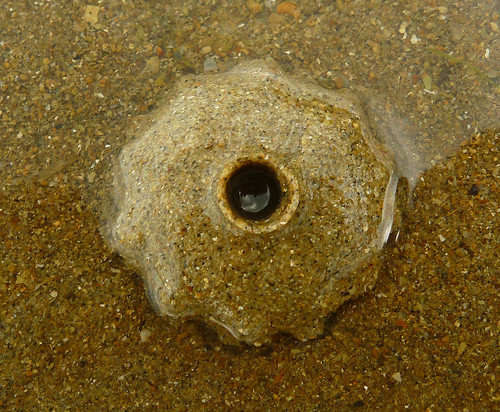
A sign that larger carnivorous snails lurk in the sand, this is a sand collar, the egg mass of a predatory moon snail (F. Naticidae).
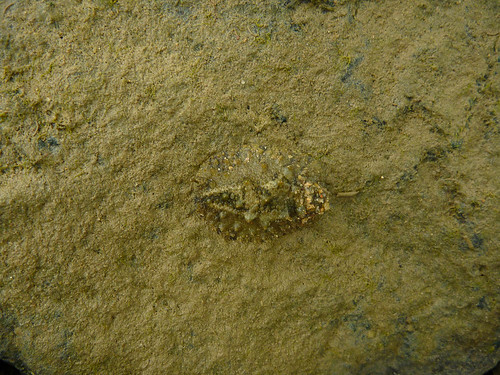
Can you find the onch slug (F. Onchidiidae)?
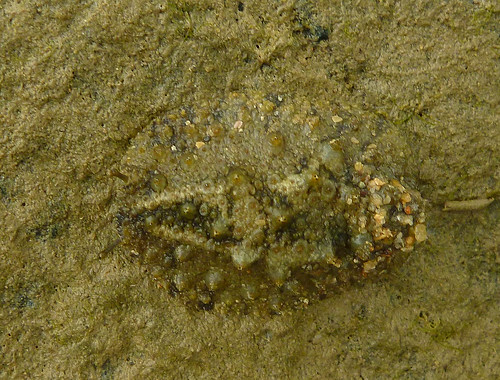
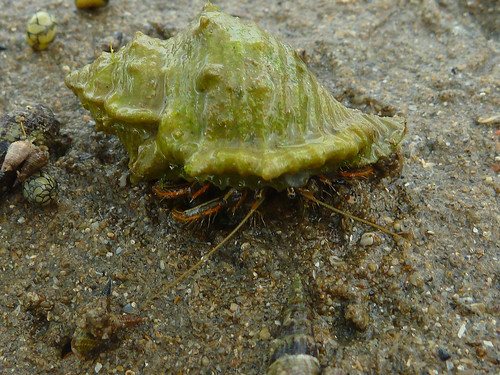
The abundance and wide variety of snails provide plenty of housing options for hermit crabs, which are commonly encountered. This is a orange striped hermit crab (Clibanarius infraspinatus); the smaller tidal hermit crabs (Diogenes sp.) are also present in large numbers, with some land hermit crabs (Coenobita sp.) found on the high shore.
![26earth-day-cleanup-recce-14apr2012[benjamin-tan]](http://farm8.staticflickr.com/7253/7126974589_42a86d287d.jpg)
Here's a land hermit crab that was found when the Zone Captains visited Tanah Merah a week ago in preparation for today's session;
(Photo by habitatnews)
Other crustaceans encountered included plenty of swimming crabs (F. Portunidae), mostly a mixture of flower crabs (Portunus pelagicus) and Thalamita species, such as the blue-spined swimming crab (Thalamita ?prymna).
![12earth-day-cleanup-tanah-merah-28apr2012[xu-weiting]](http://farm8.staticflickr.com/7189/6981034052_e2bcf9c3f5.jpg)
Weiting managed to find a spotted moon crab (Ashtoret lunaris);
(Photo by habitatnews)
Another denizen of the sandy shores remained out of sight, but signs of its presence were everywhere.
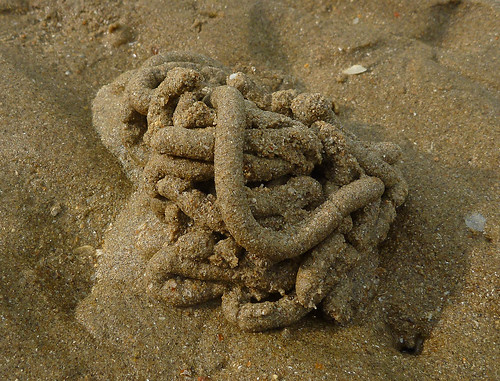
Casts of acorn worms (Enteropneusta) were scattered amongst the hordes of bazillion snails.
![12earth-day-cleanup-recce-14apr2012[benjamin-tan]](http://farm8.staticflickr.com/7186/7126987609_3c448e7529.jpg)
Although I did not manage to find any common sea stars (Archaster typicus) today, they had been seen by the Zone Captains last week;
(Photo by habitatnews)
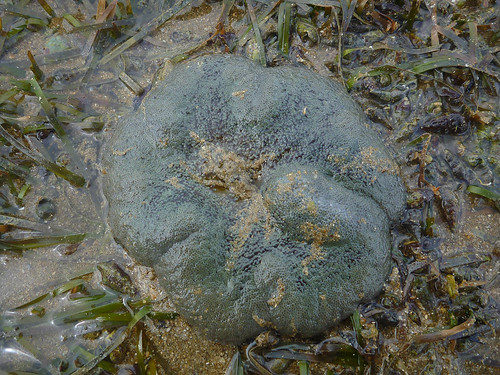
I found a small Haddon's carpet anemone (Stichodactyla haddoni) amongst the seagrass;
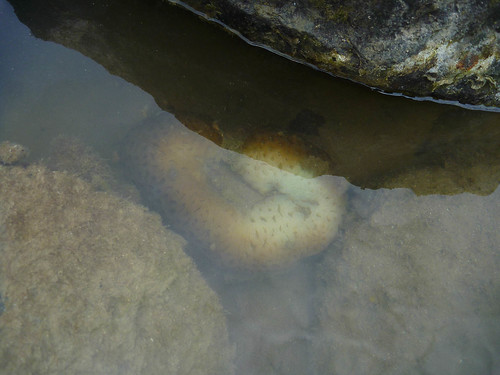
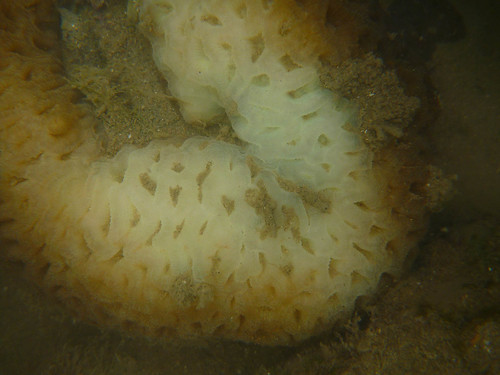
Amongst the rocks that made up the seawall, I found a favid coral (F. Faviidae) colony that was bleaching. Oh dear.
The fishes were too quick and elusive for me to take photos, but I saw many shadow gobies (Acentrogobius nebulosus), ornate lagoon gobies (Istigobius ornatus), and several tiny three-spot damselfish (Pomacentrus tripunctatus), with their electric-blue stripes.
What we saw but a tiny fraction of the diversity of species we've found and documented over the last few years, from tiny shrimps to mighty eagle rays. It certainly is heartwarming to think of how we are helping to relieve some of the pressure on the marine life that lives in this area, and restoring some of its beauty after all the damage which has been wrought by human activities.
Of course, with my morbid interest in documenting animal carcasses, even the few dead animals I saw interested me greatly.
In September 2011, the mandible of a wild boar (Sus scrofa vittatus) was found on this shore, and photographed.

September 2011;
(Photo by Marcus)
Today, the lower jaw is still on the beach, although it has taken on a deeper greenish tinge.
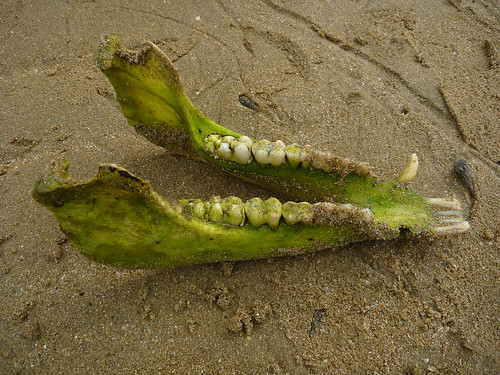
I do wonder if this is a sign that there are wild boars in the coastal forest and scrub of Changi and Tanah Merah, or whether this mandible had been washed in with the tide, which does raise a lot of interesting questions as to whether this was a wild boar from Singapore or further beyond.
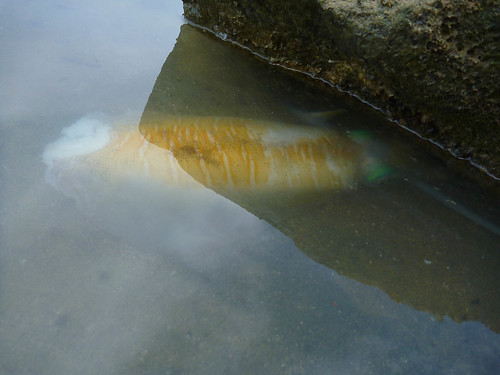
We also found this large bigfin reef squid (Sepioteuthis lessoniana), which had probably died quite recently. 2 large swimming crabs were tugging on the tentacles and nibbling on them.

I suppose it was rude of me to interrupt their meal, but the water was getting murky, and I wanted to get a clearer picture of the dead squid.
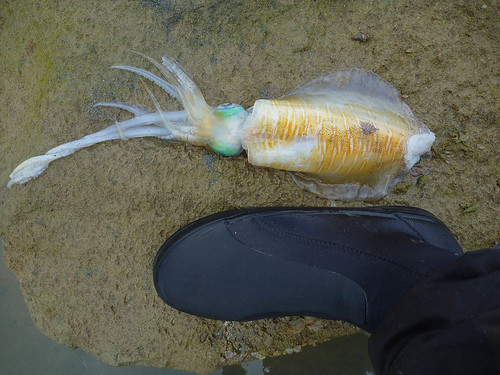
You can see how large it is.
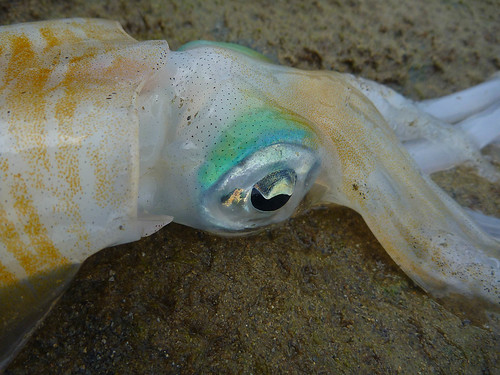
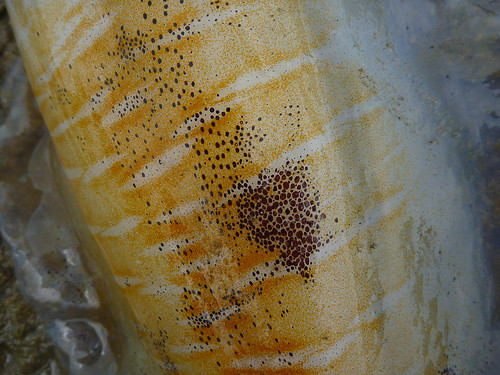
I was particularly intrigued by the chromatophores, which are the pigment-containing cells that enable the squid to change the colour patterns in its skin. Although the squid was dead, the chromatophores were still active, randomly opening and contracting, haphazardly pulsating as if the nerves were still firing away.
Like I mentioned, the tide eventually turned, forcing us to stop our cleanup.
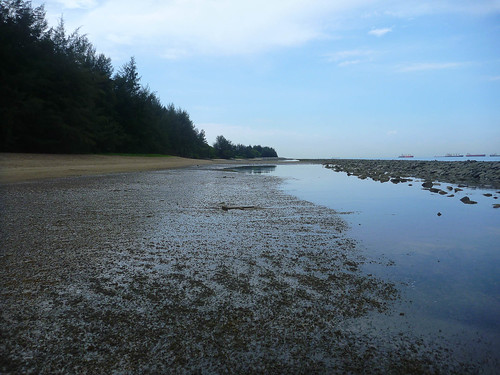

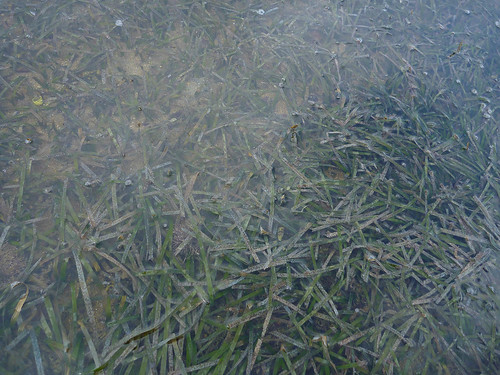
The seagrasses, limp and damp when we first found them, transform into a lush meadow with the return of the waters.
I'm looking forward to my next visit, and hopefully, with more cleanup sessions taking place over the next few months, we'll see this shore continue to flourish and recover.